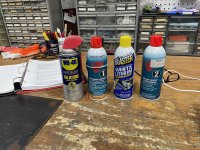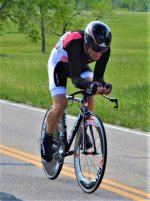I use Boeshield. (bolts not included ;-) )
They also make it in liquid form so you can use a needle applicator.
Product Description
Boeshield T-9 was developed and licensed by global aerospace leader, The Boeing Company, to fill a need for high-performance, long-term metal protection and lubrication. T-9's rust preventative spray uses a unique formulation of solvent carrier and paraffin wax coating engineered to penetrate crevices deeply, displace moisture, dissolve minor corrosion, and leave a clean, waxy coating with lasting durability-without using Teflon, silicone, fluorocarbons, MEK, or acetone. Whether it be automotive, bicycle, industrial, lawn and garden, marine, RV or tools, T-9 continues to be the best option for rust prevention and waterproof lubrication.
From the Manufacturer
On a seafaring yacht, a dusty ATV, or a shower door, T-9 has you covered. Boeshield T-9 endures muddy bike trails, rain-soaked back roads, and salted highways. It withstands farmer’s fields, offshore oil rigs, and carpenter's workshops. For everyone from firefighters and road crews to cyclists and sailors, Boeshield T-9 is the proven solution. T-9 attacks existing corrosion, loosens rusty parts, and flushes out old lubricants. It is also extremely useful for drying wet parts, electrical motors and circuits, ignitions, and connectors. Apply T-9 and wipe off the excess for immediate use. T-9 dries to a waxy, waterproof finish without leaving a sticky film to attract dirt, dust, or mud. T-9 stays liquid long enough to permeate metal crevices and seep deep inside assembled components to leave a durable protective coating as well as lubricating and protecting-all without dismantling your equipment. Apply T-9 to any metal surface and let it dry. One simple step gives you a thin, penetrating film of durable, waterproof protection and lubrication that endures, months after month or mile after mile. T-9 dries to a clean, waxy, waterproof film that won't wash off in rain, puddles, or mud. You can rinse away sand, dust and grime with water, while leaving the lubricant intact. T-9 will not harm paint, plastic, rubber, fiberglass, or vinyl. It can be used on engines, wiring, and belts. T-9 is nonconductive and will not cause short circuits, so it's also safe to use on electronics. Use solvent or any emulsifying cleaner to easily remove T-9, or simply respray and allow T-9 to dissolve itself before wiping it off.




